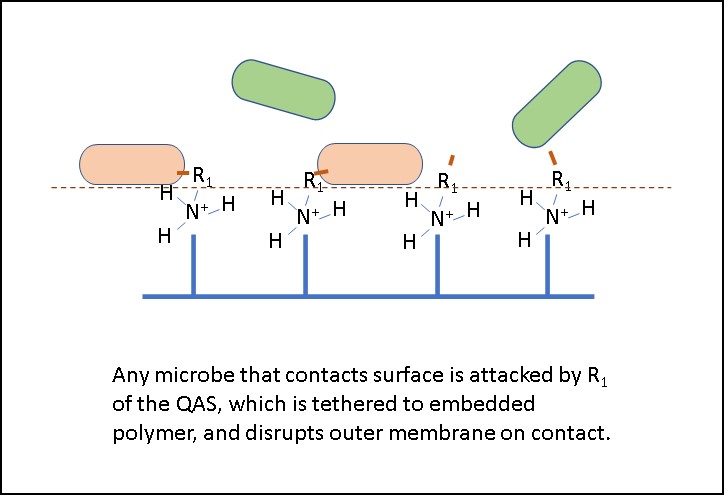Anti-Microbial Coatings for Medical and Underwater Biofouling Applications (RFT-260)
Invention Summary

Scientists at North Dakota State University have developed a method to confer dual-action and broad-spectrum (gram +, gram -, and yeast) anti-microbial properties into polymers and coatings. The anti-microbial components are quaternary ammonium salts (QAS). The QAS component is attached to polysiloxane backbone - it may be strongly attached to provide a contact-active antimicrobial, or may be gradually released and leachable. The resulting materials enable "tethering" of certain antibiotics so that they are in an accessible location, yet retained on the surface for ongoing protection.
Benefits
Confer anti-microbial effect to a diverse array of polymers and coatings, ranging from medical devices to underwater instruments
Broad efficacy against gram + gram - bacteria, and yeast
Tethered QAS disrupts outer membranes, meaning the anti-microbial surface can kill microbes on contact, making attachment to surfaces (and eventual biofilm formation) less likely/rapid
Technology
The technology includes a polysiloxane backbone that enables versatile attachment of QAS with multiple options for salts (e.g. bromides, chlorides, and iodides).
Patents
This technology is the subject of US Issued Patent No. 8,709,394 and is available for licensing/partnering opportunities.
Contact
NDSU Research Foundation
info(at)ndsurf(dot)org
(701) 231-8173
NDSURF Tech Key
RFT, 260, RFT260
Inquire about this technology >